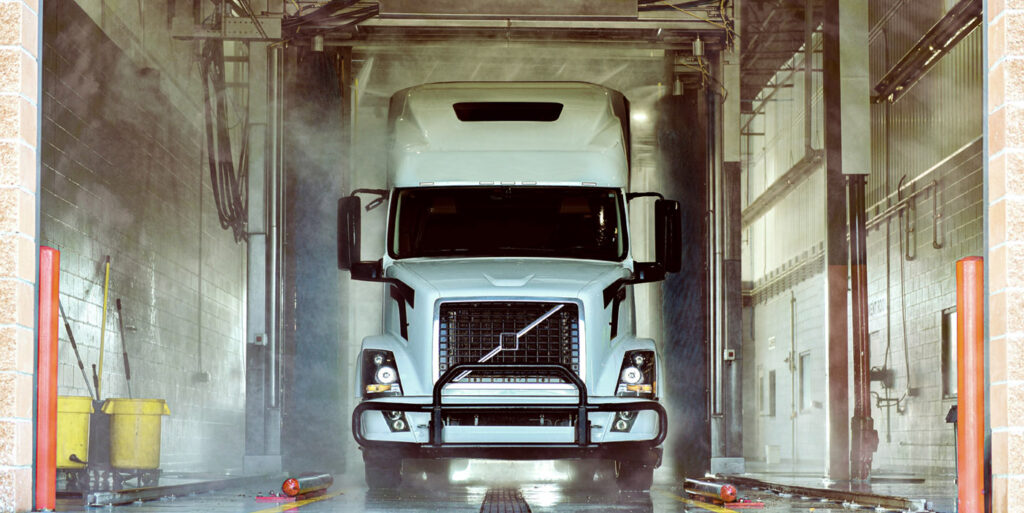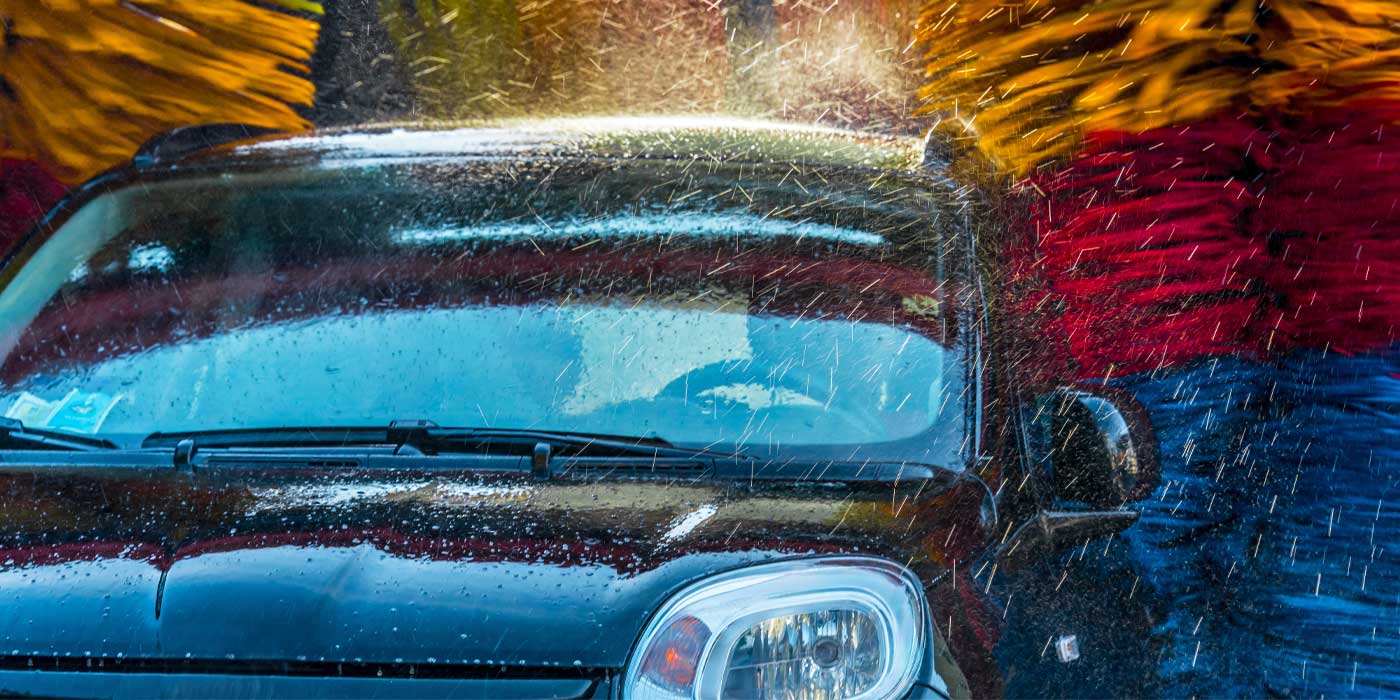While every package delivery service has the same final goal — on-time (or earlier) delivery with no fuss (or breakage) — how they refer to their respective delivery fleets is quite different. For every “package car” and “walk-in truck” there’s a whole slew of “van” styles, from “sprinter” to “cargo” to, maybe most appropriately, “delivery.” While they may use different terminology for their rolling stock, they do have this one descriptor in common: “ubiquitous,” defined as “found everywhere.”
It’s difficult to go minutes, let alone hours or days, without seeing some sort of delivery vehicle driving down the street, driven largely by the rise in online shopping. This has created a new market niche that is known as “last mile delivery,” or services that are provided by companies that specialize in the transportation of goods from a distribution hub to the final delivery destination, which is typically the front door of the purchaser.
The last mile delivery market really received a boost in 2020, however, when the shelter-in-place orders that were a mainstay of the early months of the COVID-19 pandemic forced more and more people to do their shopping via a computer screen, rather than through in-person perusal of the aisles at the local department or grocery store. Sparked by the success of last mile delivery during those trying times, there is an expanding list of businesses that were previously housed exclusively in brick-and-mortar storefronts that are now eligible to be an at-home option, from vehicle repair to veterinary services, pet grooming, and nail and hair appointments.
New vehicles, new challenges
So, while the growth of the delivery/service vehicle market has been truly significant and impressive, what has remained constant is that the fleet must be kept in tip-top shape lest operators incur excessive downtime that will hamper their ability to meet demanding delivery and appointment schedules.
While keeping the fleet road ready is paramount, another critical consideration is the appearance of the rolling stock. The vehicles are the face of the delivery company, meaning that they must be kept nice and clean, as a dirty, grimy, greasy exterior is off-putting to many customers. This must prompt the operators of delivery/service companies to invest in a vehicle wash system that is capable of efficiently and reliably delivering a clean vehicle once it returns from its long hours on the road, many of which can feature difficult traveling and climactic conditions.
The problem that is inherent in achieving a spic-and-span delivery vehicle is that many of the newer delivery units are bigger than the traditional plumbing vans and hotel shuttles that stand 7.5 feet (90 inches) tall. In fact, many of the next generation delivery vehicles stand an untraditional 108 inches, or 9 feet tall.
This means vehicle washes that are built for vans of a traditional height are too small to accommodate the newer models. Some wash manufacturers do offer bus washes that can service vehicles that are up to 144 inches (12 feet) tall, but if the fleet operation also features normal-sized automobiles, the clearance between 12 and 6 or 7 feet is too big to cover consistently, accurately or efficiently. And, not many fleet operators are willing to install two different sizes of washes, whether they be soft touch tunnel or drive-thru technology.
The final challenge revolves around time, namely the amount that is needed to successfully complete the wash process. It stands to reason that a larger vehicle will require more time to wash. That not only keeps the vehicle sidelined longer but can also result in higher water and wash chemical usage and electricity bills.
So, the sweet spot in developing a wash that can meet the needs of the new fleets of taller delivery vehicles had to be one that meets the height requirements, but can still service smaller vehicles, and do so in an optimized amount of time with no excessive amounts of water, wash chemicals or electricity required.
Building on a solid foundation
The seeds of a solution to today’s taller vehicle quandary were actually sown around 30 years ago with the creation of the first severe-duty, drive-thru vehicle wash system that was designed to meet the unique needs of car dealers, rental car agencies and other businesses that employed a fleet of vehicles.
This innovative wash system was built on a foundation of heavy-duty, aircraft-grade aluminum framework that housed minimal moving parts. When motion was required, the system actuated the wash process through the use of automotive-rated bearings and lube-free pivot points that had been built for reliable, maintenance-free operation and long service life. Additionally, unlike rollover systems that required the entire wash unit to sweep over each vehicle, the wash’s framework remained in place, allowing it to achieve and maintain the highest level of structural integrity.
But, what truly separated this new wash system from past iterations was the promise that it could deliver a clean vehicle in 60 seconds or less. This both got vehicles back on the delivery route quicker and did it while using less water and electricity. Energy was also saved through the fact that the system doesn’t have to move over the vehicle, meaning it required as little as 4 horsepower of electrical power per wash. In terms of water consumption, freshwater usage was also minimal, especially if the wash was outfitted with a water recovery system.
Innovation on the rise
Prodded by the growth in the package delivery market and its use of taller delivery vehicles, the designers of the original fleet washes have built on the ingenuity of that innovation to produce an upgraded version that can handle the wash characteristics of today’s fleets. Beginning in 2019, the wash industry began producing modified fleet-wash technology, which mainly consisted of adding some additional supports to the design, so that it could be used to wash the taller vehicles that were starting to flood the market. At the same time, the wash is still able to meet the wash needs of traditional fleet vehicles and automobiles.
Most notably, the upgraded fleet washes have a vehicle clearance of 114 inches (9.5 feet), which enables them to accommodate taller vans, while maintaining the ability to wash a vehicle of that size completely and reliably in 60 seconds or less. The system also offers the same features as the original systems, including port-proof drive-thru design; stationary aircraft-grade aluminum framework; automotive-rated bearings; lube-free pivots; guardrails that guide the driver through the wash; bolt-on wear parts that are easily accessed, serviced and replaced; and soft start motor controls that protect the equipment.
These new fleet washes are also able to be customized to meet the specific needs of the operator’s wash offering through the availability of accessories like prep jets, water reclamation systems, high capacity conveyors, pre-soak arches, side washers, tire cleaners, spot-free rinse and a wide array of dryers.
Conclusion
Whatever you choose to call them, the next generation of delivery and service vans have definitely become ubiquitous. Keeping them clean and presentable should be a front of mind concern for the operators of these fleets. An exciting new way of doing that is through upgraded fleet washes that are built on decades of in-the-field success. The task has been simplified with the creation and availability of the next generation of fleet washes that have been designed to comfortably handle today’s taller delivery vehicles while still reliably delivering a clean vehicle in 60 seconds or less and with a minimal amount of electricity, water and wash chemicals required.
Mitch Eusebio is the auto dealer and fleet sales manager for Belanger Inc. and OPW Vehicle Wash Solutions. He can be reached at [email protected]. OPW Vehicle Wash Solutions consists of PDQ Manufacturing Inc., Belanger Inc., Innovative Control Systems (ICS) and Kesseltronics. Together, they create a revolutionary single source for all vehicle wash needs. For more information on OPW Vehicle Wash Solutions, please visit opwvws.com.














